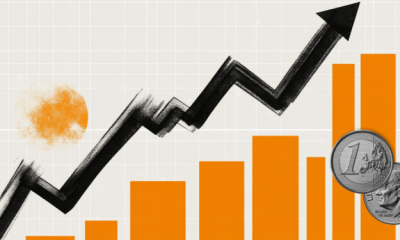

others
US Dollar flat with traders keeping powder dry for eventful week with GDP, PCE and ECB – Crypto News
- The US Dollar faces slight selling pressure on Monday.
- Traders brace for US GDP, PCE data and ECB decision this week.
- The US Dollar Index looks set to sell off as it is unable to breach through technical resistance.
The US Dollar (USD) is opening the week a bit on the backfoot. Some selling pressure appeared in Asia on early Monday morning, ahead of a packed week with a lot of data points. The busy week in the macroeconomic calendar comes along with no speeches from US Federal Reserve (Fed) officials as they are in their blackout period ahead of the January 31 rate decision.
On the economic front, the main elements will come on Thursday and Friday, with the US Gross Domestic Product (GDP) numbers and the Personal Consumption Expenditures (PCE) Price Index, the Fed’s preferred inflation measure, respectively.. The European Central Bank (ECB) and its Chairman Christine Lagarde will also decide on its monetary policy on Thursday. Until then, a very quiet start of the week is ahead on Monday, with no big economic data points scheduled.
Daily digest market movers: Traders see China not supporting
- China disappointed markets this morning by keeping its Loan Prime Rates unchanged. Several market participants were expecting some easing to support the Chinese economy.
- A new $20 billion dollar plan to support Ukraine might be put on hold by the EU.
- Nasdaq futures rally substantially ahead of the US opening bell.
- The US Treasury is heading to markets to allocate a 6-month and a 3-month bill at 16:30 GMT.
- Equity markets are up across the board, with Japan leading the uprising. Both the Nikkei and the Topix are up over 1% near their closing bell. The laggards are markets in mainland China, which are down over 1% for both the Hang Seng and the Shenzhen Index.
- The CME Group’s FedWatch Tool shows that markets are pricing in a 100% chance that the Federal Reserve will keep interest rates unchanged at its January 31 meeting. Meanwhile, the Fed is in its blackout period, so officials will not communicate any further until the end-month meeting.
- The benchmark 10-year US Treasury Note slides to 4.08%, coming from 4.13%. With risk appetite coming back in the markets, bonds are being bought again.
US Dollar Index Technical Analysis: Events not in favor of DXY
The US Dollar Index (DXY) is facing substantial selling pressure. A daily chart shows a third consecutive day with lower highs and lower lows. This points to increasing selling pressure, while the DXY is failing to hold ground above the very important technical levels in the form of the 200-day Simple Moving Average (SMA) at 103.47 and the 55-day SMA at 103.28.
There are some economic data points that could still build a case for the DXY to get through those two moving averages again and run away. Look for 104.44 as the first resistance level on the upside, in the form of the 100-day SMA. If that gets scattered as well, nothing will hold the DXY from heading to either 105.88 or 107.20, the high of September.
A bull trap looks to be underway, where US Dollar bulls were caught buying into the Greenback when it broke above both the 55-day and the 200-day SMA in last week’s trading. Price action could decline substantially and force US Dollar bulls to sell their positions at a loss. This would see the DXY first drop to 102.60, at the ascending trend line from September. Once below it, the downturn is open towards 102.00.
Fed FAQs
Monetary policy in the US is shaped by the Federal Reserve (Fed). The Fed has two mandates: to achieve price stability and foster full employment. Its primary tool to achieve these goals is by adjusting interest rates.
When prices are rising too quickly and inflation is above the Fed’s 2% target, it raises interest rates, increasing borrowing costs throughout the economy. This results in a stronger US Dollar (USD) as it makes the US a more attractive place for international investors to park their money.
When inflation falls below 2% or the Unemployment Rate is too high, the Fed may lower interest rates to encourage borrowing, which weighs on the Greenback.
The Federal Reserve (Fed) holds eight policy meetings a year, where the Federal Open Market Committee (FOMC) assesses economic conditions and makes monetary policy decisions.
The FOMC is attended by twelve Fed officials – the seven members of the Board of Governors, the president of the Federal Reserve Bank of New York, and four of the remaining eleven regional Reserve Bank presidents, who serve one-year terms on a rotating basis.
In extreme situations, the Federal Reserve may resort to a policy named Quantitative Easing (QE). QE is the process by which the Fed substantially increases the flow of credit in a stuck financial system.
It is a non-standard policy measure used during crises or when inflation is extremely low. It was the Fed’s weapon of choice during the Great Financial Crisis in 2008. It involves the Fed printing more Dollars and using them to buy high grade bonds from financial institutions. QE usually weakens the US Dollar.
Quantitative tightening (QT) is the reverse process of QE, whereby the Federal Reserve stops buying bonds from financial institutions and does not reinvest the principal from the bonds it holds maturing, to purchase new bonds. It is usually positive for the value of the US Dollar.
-

 Technology6 days ago
Technology6 days agoMeet Matt Deitke: 24-year-old AI whiz lured by Mark Zuckerberg with whopping $250 million offer – Crypto News
-

 Cryptocurrency7 days ago
Cryptocurrency7 days agoXRP inflows drop 95% since July spike, while Chaikin data signals possible rally – Crypto News
-

 Blockchain6 days ago
Blockchain6 days agoBank of America Sees Interest in Tokenization of Real-World Assets – Crypto News
-

 Technology1 week ago
Technology1 week agoIs AI causing tech worker layoffs? Thats what CEOs suggest, but the reality is complicated – Crypto News
-
others7 days ago
Breaking: Strategy Files $4.2 Billion STRC Offering To Buy More Bitcoin – Crypto News
-
others7 days ago
XRP NIGHT Token Airdrop: Snapshot, Claim Date and What to Expect? – Crypto News
-

 Blockchain1 week ago
Blockchain1 week agoSEC Crypto ETFs Ruling Brings Structural Fix, Not Retail Shakeup – Crypto News
-
Business1 week ago
Breaking: Solana ETFs Near Launch as Issuers Update S-1s With Fund Fees – Crypto News
-

 Blockchain5 days ago
Blockchain5 days agoAltcoin Rally To Commence When These 2 Signals Activate – Details – Crypto News
-
Cryptocurrency5 days ago
Cardano’s NIGHT Airdrop to Hit 2.2M XRP Wallets — Find Out How Much You Can Get – Crypto News
-

 Business1 week ago
Business1 week agoChase Launches $4 Million Grant Program as Restaurants Struggle – Crypto News
-
others1 week ago
Ripple Swell 2025: Top Speakers and Panelists to Watch this November – Crypto News
-

 Technology7 days ago
Technology7 days agoOppo K13 Turbo series confirmed to launch in India with in-built fan technology: Price, specs and everything expected – Crypto News
-
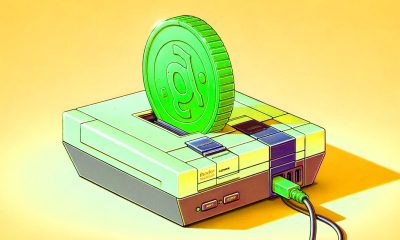
 others1 week ago
others1 week agoBlockchain Gaming Is Growing Up – What’s Behind the Sector’s Quiet Comeback – Crypto News
-
Business1 week ago
Stablecoins Won’t Boost Treasury Demand, Peter Schiff Warns – Crypto News
-
Technology1 week ago
Coinbase to Offer Tokenized Stocks and Prediction Markets in U.S. – Crypto News
-

 others7 days ago
others7 days agoCanadian Dollar under pressure amid weak GDP, Trump tariff threat, and strong US data – Crypto News
-
Business6 days ago
Bitpanda Co-Founder & Co-CEO Paul Klanschek Steps Down as Firm Eyes Frankfurt IPO – Crypto News
-
Technology4 days ago
Beyond Billboards: Why Crypto’s Future Depends on Smarter Sports Sponsorships – Crypto News
-
others1 week ago
Breaking: PayPal to Let Merchants Accept Payments in Over 100 Cryptocurrencies – Crypto News
-

 Blockchain1 week ago
Blockchain1 week agoSEC Gives Green Light to In-Kind Transactions for Crypto ETPs – Crypto News
-
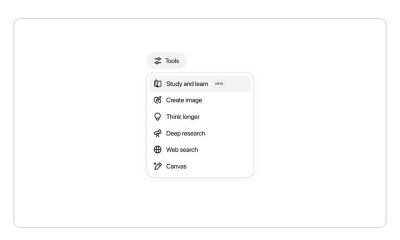
 Metaverse1 week ago
Metaverse1 week agoOpenAI rolls out ‘Study Mode’ in ChatGPT: What is it? How to use? All your questions answered… – Crypto News
-
Technology1 week ago
Breaking: BlackRock’s Ethereum ETF Staking Proposal Advances As SEC Acknowledges Filing – Crypto News
-
Technology1 week ago
Ethereum Price Prediction- Bulls Target $5,400 Amid DeFi Revival and Soaring TVL – Crypto News
-
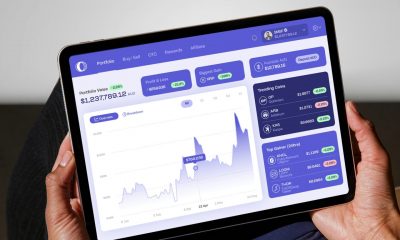
 Technology1 week ago
Technology1 week agoCoinbase exchange targets alleged cybersquatter in lawsuit – Crypto News
-

 De-fi1 week ago
De-fi1 week agoWhite House Crypto Report Recommends Expanding CFTC’s Role in Crypto Regulation – Crypto News
-

 Technology6 days ago
Technology6 days agoBig Tech’s Big Bet on AI Driving $344 Billion in Spend This Year – Crypto News
-
Cryptocurrency6 days ago
CME XRP Futures Hit Record Highs in July Amid ETF Approval Optimism – Crypto News
-
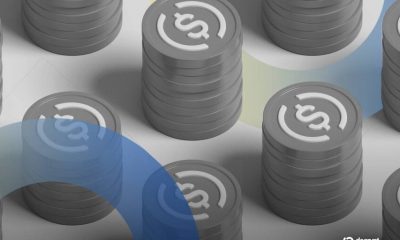
 Cryptocurrency5 days ago
Cryptocurrency5 days agoStablecoins Are Finally Legal—Now Comes the Hard Part – Crypto News
-

 Cryptocurrency5 days ago
Cryptocurrency5 days agoTron Eyes 40% Surge as Whales Pile In – Crypto News
-

 Cryptocurrency5 days ago
Cryptocurrency5 days agoEthereum Hits Major 2025 Year Peak Despite Price Dropping to $3,500 – Crypto News
-

 Technology1 week ago
Technology1 week agoSpotify hits 276M subscribers and strong user growth in Q2, but revenue and profit fall short of targets – Crypto News
-

 Cryptocurrency1 week ago
Cryptocurrency1 week agoAltcoins update: Dogecoin and Injective signal recoveries as Ethereum eyes $4,000 – Crypto News
-
Business1 week ago
Breaking: CBOE Files For Rule Change To List Crypto ETFs Without SEC Approval – Crypto News
-
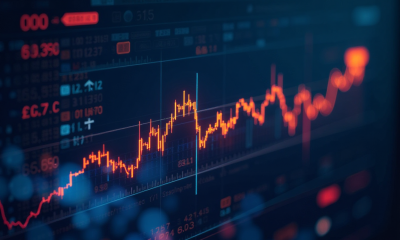
 Technology1 week ago
Technology1 week agoSolana DEX volume dips 20% after co-founder slams meme coins – Crypto News
-

 Technology7 days ago
Technology7 days agoTim Cook confirms Apple will ramp up AI spending, ‘open’ to acquisitions – Crypto News
-

 Technology7 days ago
Technology7 days agoOppo K13 Turbo series confirmed to launch in India with in-built fan technology: Price, specs and everything expected – Crypto News
-

 Blockchain6 days ago
Blockchain6 days agoStrategy Expands STRC Offering Twice in One Week – Crypto News
-
Technology5 days ago
Will The First Spot XRP ETF Launch This Month? SEC Provides Update On Grayscale’s Fund – Crypto News
-

 Technology5 days ago
Technology5 days agoAmazon Great Freedom Sale deals on smartwatches: Up to 70% off on Samsung, Apple and more – Crypto News
-
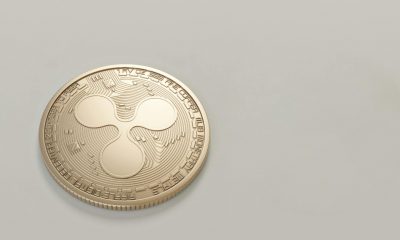
 Blockchain5 days ago
Blockchain5 days agoXRP Must Hold $2.65 Support Or Risk Major Breakdown – Analyst – Crypto News
-

 Blockchain5 days ago
Blockchain5 days agoXRP Must Hold $2.65 Support Or Risk Major Breakdown – Analyst – Crypto News
-
Business4 days ago
Is Quantum Computing A Threat for Bitcoin- Elon Musk Asks Grok – Crypto News
-

 Technology4 days ago
Technology4 days agoElon Musk reveals why AI won’t replace consultants anytime soon—and it’s not what you think – Crypto News
-

 Technology4 days ago
Technology4 days agoGoogle DeepMind CEO Demis Hassabis explains why AI could replace doctors but not nurses – Crypto News
-

 Cryptocurrency1 week ago
Cryptocurrency1 week agoCoinbase and JPMorgan Chase partner for crypto integration – Crypto News
-

 others1 week ago
others1 week agoGold slides below $3,300 as traders await Fed policy decision – Crypto News
-

 others1 week ago
others1 week agoGold slides below $3,300 as traders await Fed policy decision – Crypto News
-

 Technology1 week ago
Technology1 week agoNintendo Direct Partner showcase highlights third-party titles coming to Switch and Switch 2 – Crypto News
-
![WBC Elliott Wave analysis and Elliott Wave forecast [Video]](https://dripp.zone/news/wp-content/uploads/2025/01/WBC-Elliott-Wave-analysis-and-Elliott-Wave-forecast-Video-400x240.jpg)
![WBC Elliott Wave analysis and Elliott Wave forecast [Video]](https://dripp.zone/news/wp-content/uploads/2025/01/WBC-Elliott-Wave-analysis-and-Elliott-Wave-forecast-Video-80x80.jpg) others1 week ago
others1 week agoCan the record-breaking rally last? – Crypto News







